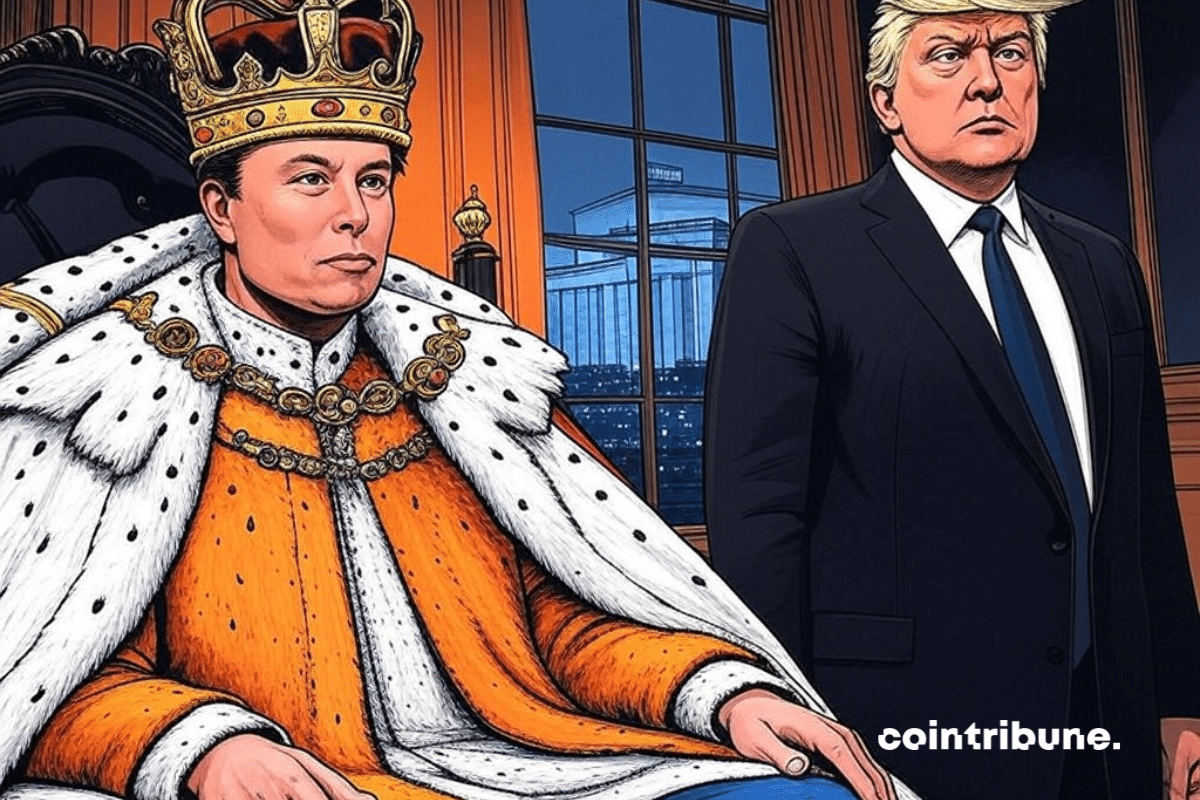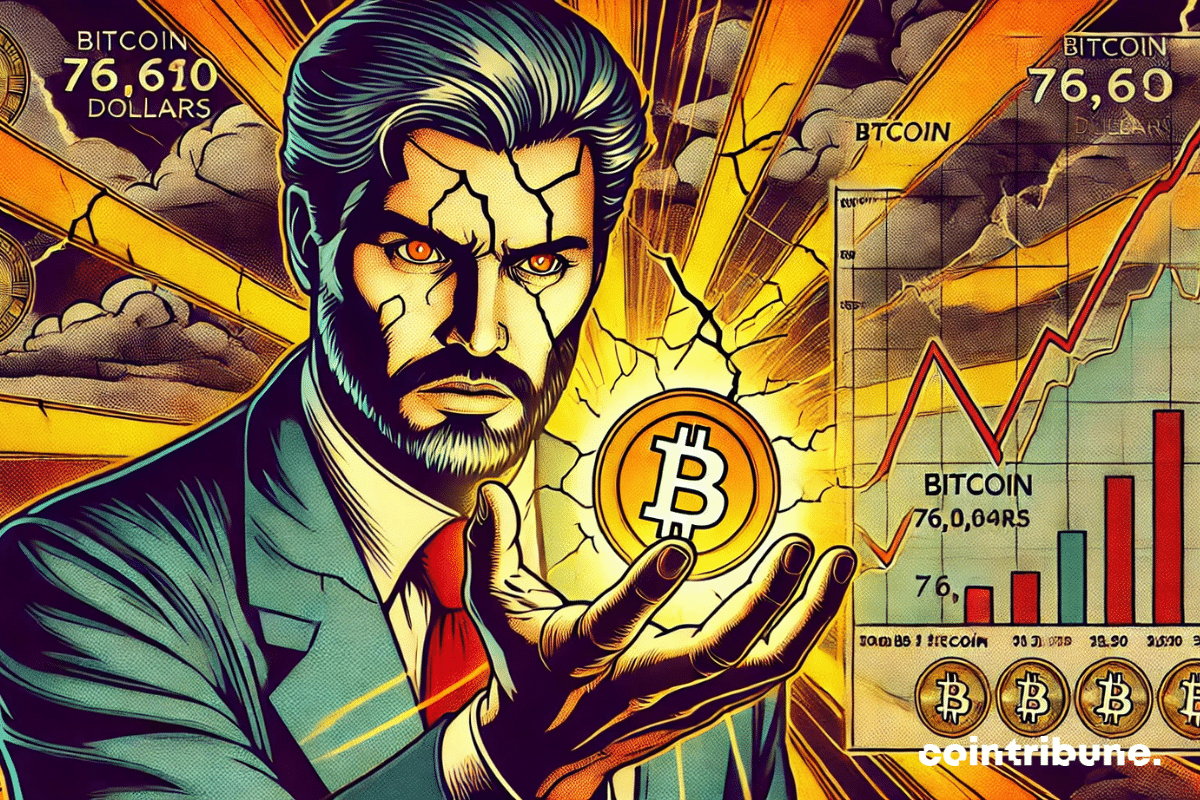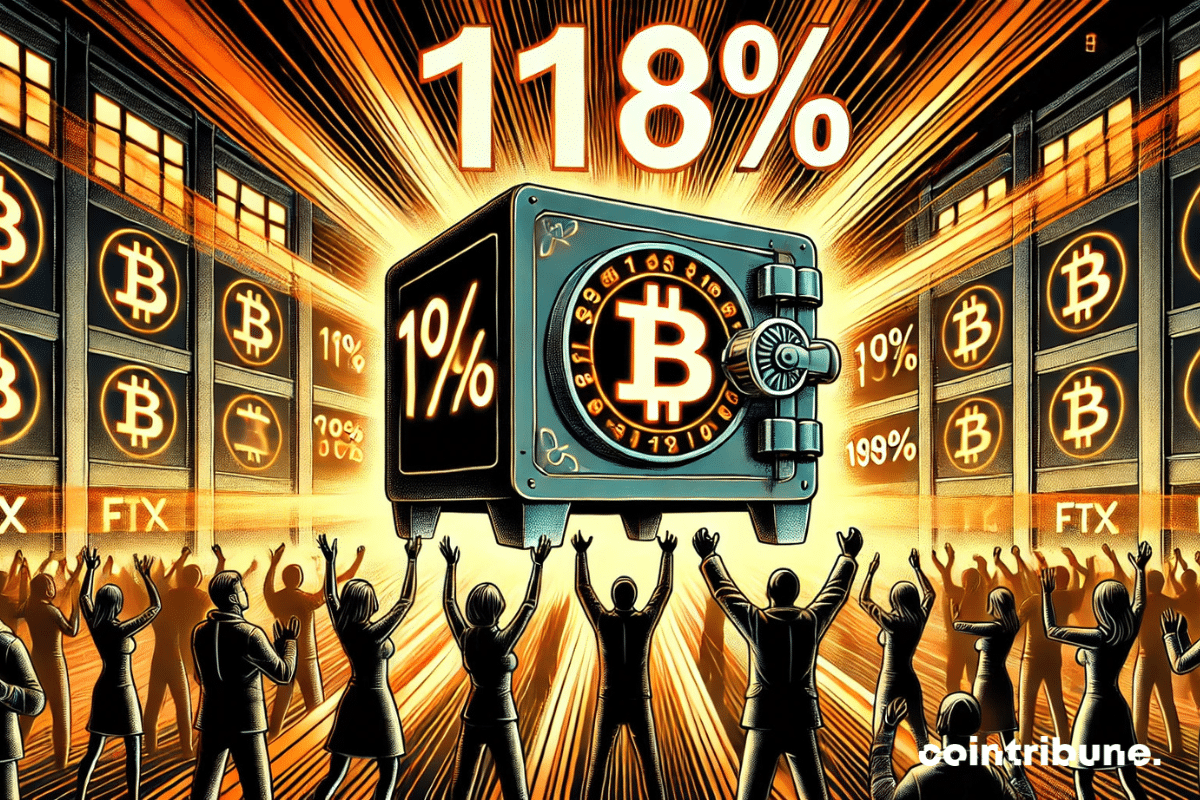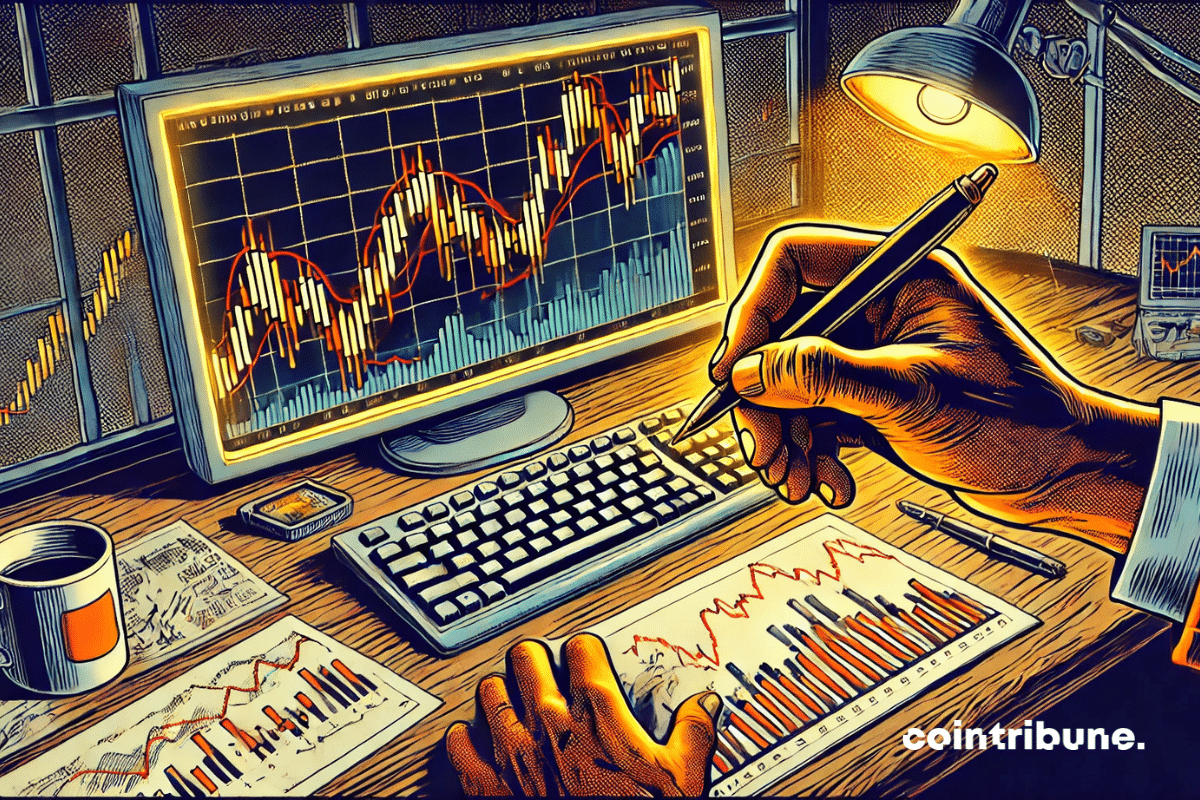Solana, like a Phoenix, rises from the ashes of FTX. With a 2,000% increase, it makes Bitcoin and Ethereum look outdated, showing record volumes and spectacular inflows.
Theme Trading
The world of crypto could experience a historic change with Donald Trump's return to the White House. Indeed, the elected president, already known for his divisive stances, has placed crypto at the heart of his economic priorities. He aims to propel the United States to the status of a global leader in this rapidly expanding sector. Among his promises are the creation of a strategic reserve of bitcoins and the establishment of policies favorable to crypto businesses. These initiatives, which demonstrate a desire for a break from the previous administration, evoke a mix of hope and skepticism within the industry. While his supporters praise a bold vision for the future of crypto, observers remind us of the many obstacles that will arise in the realization of these projects, whether political, economic, or regulatory. Donald Trump's next term could thus mark a decisive turning point in the evolution of cryptocurrencies in the United States and on the international stage.
As the year comes to a close, the bitcoin market finds itself at a decisive stage. Investors were hoping for a period of stability to end 2024 on a positive note after a series of significant fluctuations. However, several major technical indicators are countering these expectations and pointing towards a possible significant correction. Among these signals, the formation of a bearish pattern on the weekly charts and the erosion of critical support levels are raising serious concerns. Concurrently, macroeconomic conditions, marked by a decline in global money supply and a tightening of policies by the U.S. Federal Reserve, are increasing pressure on risk assets. These combined elements are fueling the most pessimistic projections. Thus, some observers even suggest that the price of bitcoin could drop by $20,000. A thorough analysis of these dynamics reveals both the challenges and the opportunities of a market in search of new certainties.
Elon Musk is shaking Washington. Between his influence on social media and his hundreds of millions of dollars in donations, Elon Musk is increasingly establishing himself as the true master of the White House.
Bitcoin, often presented as a store of value and a driver of financial innovation, is going through a period of uncertainty. Peter Brandt, a renowned trader known for the accuracy of his technical analyses, has warned about the formation of a bearish pattern on the daily charts of the cryptocurrency. This observation raises new concerns among investors, who are closely monitoring the maintenance of critical support levels. In a context where markets are already shaken by increased volatility, Brandt's warning resonates as a strong signal and calls for vigilance. This warning, although hypothetical, fuels discussions about the evolution of Bitcoin and its role in a changing global economic landscape.
For several weeks, the crypto universe has been immersed in a period of turbulence. Increased volatility and widespread losses have put investors' portfolios under strain and shaken confidence in several assets. However, amid this chaos, some cryptocurrencies manage to stand out by capturing the attention of analysts and triggering interest from investors. Solana (SOL), in particular, stands out as an example of resilience. Despite recent declines, this asset continues to benefit from favorable indicators and strong momentum, suggesting promising prospects for the future.
In 2024, Bitvavo reached a major milestone by recording a trading volume of nearly 100 billion euros, thus consolidating its position as a leader in the European crypto market. This exceptional performance is the result of a combination of several favorable factors that propelled the platform to new heights.
The crypto market is going through a period of high volatility, marked by a drop in the price of Bitcoin, now valued at $100,300. This unexpected plunge for many investors comes in the wake of the recent announcements from the U.S. Federal Reserve. While the 0.25% reduction in the federal funds rate appeared to align with expectations, the upward revision of inflation forecasts for 2025, now set at 2.5% from 2.1% previously, took the markets by surprise. In his speech, Jerome Powell, the Fed chair, emphasized that these adjustments reflect a cautious approach in the face of current economic challenges. These decisions have triggered shockwaves in the financial markets, increasing uncertainties and sparking a debate on the potential implications for crypto investors.
The world of crypto is buzzing with activity. Recent projections around Bitcoin continue to capture the attention of investors and financial institutions. An analysis published by Bitfinex estimates that Bitcoin could reach $200,000 by mid-2025, a scenario fueled by massive institutional flows and ever-growing global adoption. This forecast is based on deep dynamics, particularly the enthusiasm for Bitcoin ETFs and increased institutional demand, which reinforce the crypto's position as a strategic asset. Furthermore, these anticipations are set against a backdrop where Bitcoin is undergoing major transformations, revealing a market in search of stability and maturity. Far from being limited to a simple price increase, this trajectory could redefine the fundamentals of a sector that gains legitimacy and global influence every day.
The altcoin season index, which measures the performance of major crypto assets against Bitcoin, is showing troubling signs. With a recent drop in this index and a return of Bitcoin's dominance, analysts anticipate a period of turmoil for altcoins.
The global economic landscape is at a critical phase. Every decision by the Federal Reserve (Fed) becomes a key signal, closely monitored by investors and financial analysts. In this context, the imminent announcement of a new interest rate cut sparks keen interest. As inflation, once rampant, begins to return to more controlled levels, the Fed is considering reducing its benchmark rate once again, this time to a range of 4.25% to 4.5%. This measure, which is part of an economic stabilization strategy, leaves no market indifferent. For cryptocurrencies, this announcement fuels both hope for a more favorable monetary environment and fear of increased instability. As Bitcoin and Ethereum already face significant declines, investors question the prospects ahead.
December is shaping up to be a pivotal month for the crypto market, particularly for altcoins, which may experience significant movements. As important U.S. economic decisions approach, investors are closely monitoring macroeconomic and on-chain indicators to anticipate upcoming trends.
The bankruptcy of FTX has been a real earthquake in the history of the cryptosphere. It has deeply shaken investor confidence and revealed significant structural flaws within the industry. Nearly two years after its collapse in November 2022, the bankrupt exchange is back in the spotlight with an ambitious reorganization plan, recently validated by the American judiciary. This plan includes an unprecedented repayment to creditors, which will begin on January 3, 2025, with a promise of restitution of up to 118% of the declared debts. To orchestrate this operation, FTX relies on well-known players in the sector. Kraken, experienced in such procedures after having played a key role in managing the Mt. Gox case, and BitGo, an expert in secure crypto custody, have been chosen to handle the repayments. Their involvement offers both security and transparency, two essential values to regain the trust of the creditors and ease the persistent tensions.
The sector of crypto related to artificial intelligence is experiencing rapid growth in 2024. After a chaotic period marked by high volatility and geopolitical challenges such as U.S. restrictions on AI chip exports to China, the market has regained new momentum. This spectacular recovery has resulted in a 208% growth over the year, propelling the total market capitalization of the sector to $61.5 billion. Several dynamics are at play behind this remarkable rebound. On one hand, the increasing adoption of blockchain solutions powered by artificial intelligence has bolstered the credibility of these technologies. On the other hand, the heightened demand for utility tokens that can support expanding ecosystems in areas such as gaming, entertainment, and decentralized services has solidified this trend.
The crypto market is undergoing a major transformation, driven by the growing interest from institutional investors. Among the key players in this revolution, BlackRock stands out through the development of financial products specific to Bitcoin and Ethereum, the two most emblematic assets. According to Jay Jacobs, head of ETFs at the company, the funds dedicated to these cryptos still represent a largely untapped potential. With the assertion that current demand is just "the tip of the iceberg," he indicates that institutional adoption is still in the emerging phase. With assets under management already exceeding $54 billion for the Bitcoin fund (IBIT) and nearly $4 billion for the Ethereum fund (ETHA), these figures reflect the scale of a phenomenon poised to redefine investment strategies on a global scale.
A major move could redefine the outlook for Ethereum as the crypto market undergoes a consolidation phase. On December 14, an exceptional transaction of 418 million dollars, equivalent to 108,521 ETH, was recorded. This withdrawal, the largest seen since March, was made directly from exchanges, a decision that catches the attention of analysts and investors. Such a significant reduction in available assets on exchanges hints at a change in approach among Ethereum holders, who now seem to favor a long-term holding strategy. With the decrease in selling pressure, this move bolsters the assumption of a forthcoming price increase, fueled by positive technical signals. As Ethereum approaches key resistance zones, speculation about a return to the peaks reached in 2021 is growing.
The price of Solana has recently recorded a decline of 16.8% from its yearly peak, reflecting a pause in the crypto momentum. Despite this correction, technical and fundamental signals suggest long-term bullish potential. Between descending wedges, regulatory support, and growth catalysts, SOL maintains hopes for a new push to higher peaks.
In the complex world of trading, understanding and analyzing market trends are essential for success. Among the various tools of technical analysis, the Hurst cycle stands out for its ability to predict market movements based on historical trends. This article explores in detail the Hurst cycle, starting with its fundamental principle, its advantages, and its practical application in trading.
Trading on financial markets requires precise analysis and a deep understanding of market trends. Technical indicators are essential tools in this process. They provide key information to guide trading decisions. However, with the multitude of indicators available, it can be difficult for traders to choose those that best suit their needs and strategies. This article offers a clear guide on the most popular technical indicators, their selection, and optimal usage.
In the world of trading, moving averages stand out as prominent technical indicators. They allow traders to analyze short-term price fluctuations, providing a clearer view of market dynamics. However, their use requires a deep understanding and prudent interpretation. This article explores the fundamentals of moving averages, their different types, their limitations and pitfalls, as well as practical tips for their use.
In the dynamic world of trading, technical indicators play a crucial role in traders' decision-making. Among these tools, the Relative Strength Index (RSI) stands out for its versatility and effectiveness. This indicator helps assess the strength of market trends and identify potential reversal points. However, despite its popularity, the RSI presents challenges and limitations that traders must understand to use it effectively. This article explores the RSI in detail, from its functioning to its practical application, while highlighting the precautions to take to optimize its use in trading strategies.
Bollinger bands are a technical analysis tool that provides essential insights into volatility and price trends in financial markets. However, this widely recognized indicator requires a deep understanding to be used effectively. Overview of the specifics of Bollinger bands.
Support and resistance are levels at which prices stop on the chart, confronting buyers and sellers of the asset. Aiming to understand price movements, they serve as the foundation for stock market investment strategies. But how can these levels be identified? What are the advantages and limitations? How to trade cryptocurrencies using these indicators? The answers in this article.
Chartism is a graphical analysis technique of financial markets. Widely used in crypto trading, it is an essential decision-making tool. Will this digital currency rise or fall? When is the right time to buy or sell? Let’s discover everything there is to know about this analysis method in the crypto market.
The MACD is a leading technical indicator in the trading field. Used to analyze market trends, it helps traders make informed decisions based on price movements. However, despite its popularity, the MACD can sometimes be misunderstood or misused, raising questions about its interpretation and practical application. This article explores the MACD in detail, from how it works to its use in trading, including its advantages and limitations.
Since its rapid rise on the crypto scene as an iconic memecoin, Shiba Inu (SHIB) has established itself as a key player in this universe. This token, often seen as a lucrative opportunity by investors, seemed until now to capitalize on the enthusiasm of its community. However, the recent drop in its price constitutes an unexpected event. After reaching a spectacular peak, SHIB is undergoing a correction phase that raises questions about its long-term viability. Thus, the current situation highlights the fragility of market dynamics surrounding community tokens and prompts reflection on the challenges facing the Shiba Inu ecosystem, despite the unwavering support of its followers.
The crypto market continues to captivate investors and institutions, but a new analysis reignites debates. According to VanEck, a major player in asset management, the year 2025 could be marked by unprecedented movements. Matthew Sigel, head of crypto research, initially anticipates a significant correction in Bitcoin and altcoins over the summer, followed by a rise to historical peaks by the end of the year. These predictions, based on economic signals and cyclical trends, present crucial stakes for the markets, from institutional adoption to changing regulations.
Bitcoin is experiencing an unprecedented surge, with a price surpassing the symbolic threshold of $100,000. In this context of spectacular ascent, a major deadline is approaching rapidly: December 27. Bitcoin options worth a record $19.8 billion are set to expire. This event marks a significant milestone for the market, as it is likely to redefine short-term price dynamics and influence the strategies of investors, whether retail or institutional.
Cryptos continue to disrupt financial norms and attract increased interest from institutional investors. Among them, Bitcoin stands out for its pioneering role and as a safe haven. Currently, a report from Matrixport has shaken the crypto community with a bold prediction: Bitcoin could reach $160,000 by 2025. This projection is based on several strategic factors, including the rise of Bitcoin ETFs, which symbolize significant institutional adoption, and favorable transformations in the global macroeconomic framework. Thus, such elements reinforce the perception of Bitcoin as an essential asset, capable of becoming more dominant in investment portfolios.
In a constantly changing financial environment, BlackRock, the world's largest asset manager, is taking a key step through the proposal of a new strategic direction. The company, managing $11.5 trillion in assets, now recommends a portfolio allocation of between 1% and 2% in bitcoin. This positioning marks a decisive step in the way institutions approach these assets. Such an initiative sparks a dual interest. On one hand, it reflects the growing recognition of bitcoin as a distinct asset class, with unique diversification potential. On the other hand, it raises questions about how this integration could redefine investment strategies and influence the dynamics of traditional portfolios.





























